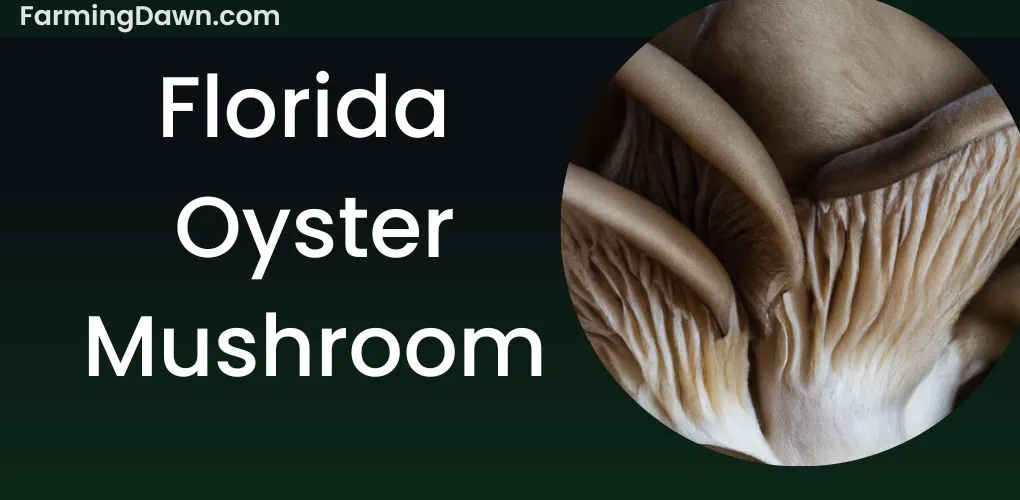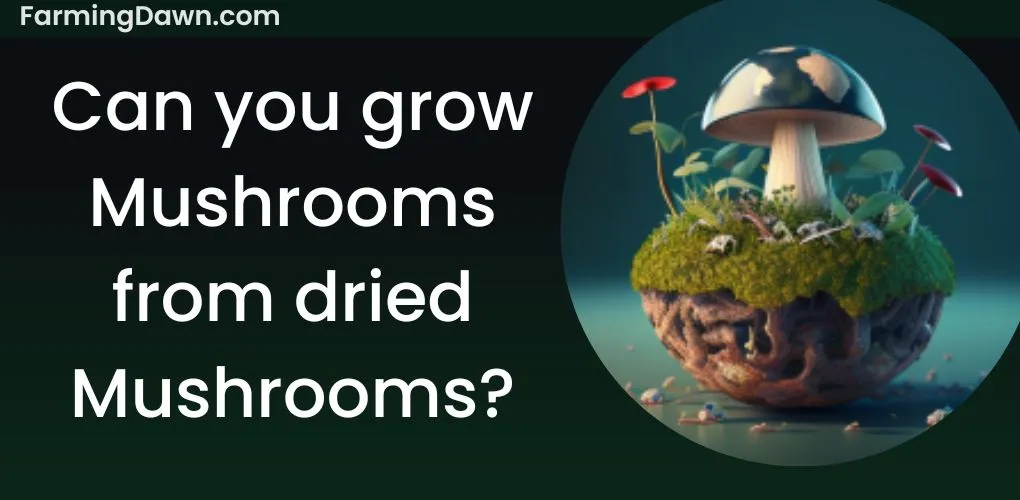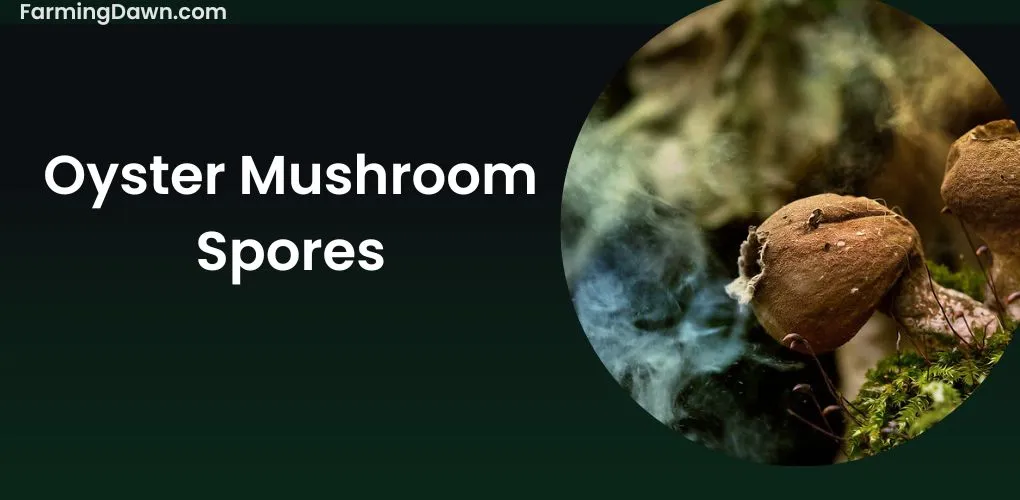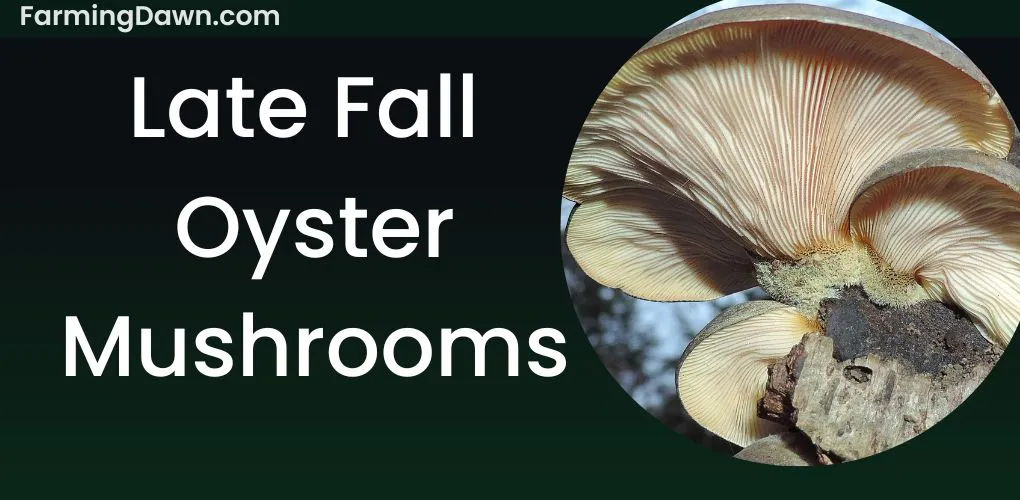Florida is well recognized for its spotless beaches, abundant sunshine, and many different mushroom species. However, the Florida oyster mushroom is also a rare and delectable kind of fungus that can be found there. These mushrooms are prized for their refined flavor and delicate texture and are naturally grown in the state’s damp woodlands.
They have always been increasingly popular among food enthusiasts and chefs etc. But recently, gardeners have also started to take an interest in them.
Today, I’ll go into the world of Florida oyster mushrooms, including their origin, growing process, fruiting environments, and everything.
What is the Florida oyster mushroom?
Florida oyster mushroom (Pleurotus floridanus) is an edible mushroom native to the southeastern United States, including Florida. It belongs to the oyster mushroom family and gets its name from the oyster-like shape and flavor.
The caps of oyster mushrooms in Florida range in size from 2 to 8 inches in diameter, and they come in various tones, from tan to light brown. The caps usually have a fan-like shape and a velvety texture. The crown of the mushroom is generally joined at an angle by short, thick stems.

Origin and Importance of Florida Oyster Mushroom
The Florida Oyster Mushroom has been growing in Florida’s natural forests and wetlands. It is native to North America and belongs to the Pleurotus genus. It is also the source of well-known shiitake and oyster mushrooms that are popular in cooking. You can often find them growing on dead or dying beech trees like hickory and walnut.
For gardeners who desire to produce their food, Florida oyster mushrooms are a fantastic option. Due to their modest size and easy-growing nature, they are a perfect choice for small gardens.
Along with their great nutritional value, these mushrooms are coveted for their unique taste and texture. It is a versatile and well-liked component in many different styles of cuisine because of its capacity to absorb and enhance the flavors of other ingredients.
Florida Oyster Mushrooms Cultivation
For the past 6 months, I have been testing different methods to grow these types in my garden. In this section, I am sharing my best results for proper development:
Supplies You Will Need
You must first obtain the necessary supplies before cultivating oyster mushrooms in Florida. What you’ll need is as follows:
- Mushroom spawn
You can buy mushroom spawn anywhere, just as you see fit. For optimum results, I will suggest you use Florida oyster mushroom spawn.
- Substrate
Florida oyster mushrooms can grow on a variety of substrates, but I found that a mix of straw and sawdust works best. You may purchase a pre-made mushroom substrate or make your own by combining sawdust and straw.
- Container
You’ll require a container to keep your substrate and mushroom spawn. A large plastic bag works well, or you can utilize a plastic container for storing with a lid.
- Water
Because moisture is necessary for mushrooms to develop, you should have access to pure, non-chlorinated water.

Step By Step Process to Cultivate Florida Oyster Mushroom
- Get Your Substrate Ready
Once you have everything, it’s time to get your substrate ready. If you’re constructing your substrate, combine equal parts of straw and sawdust before moistening, then wet the mixture until it is damp but not dripping consistently. If you’re using a pre-made substrate, you can skip this step.
- Vaccinate Your Substrate
Next, you’ll need to inoculate your substrate with mushroom spawn. Spread the spawn uniformly over the substrate and then incorporate it with your hands or a clean tool. Make sure the spawn is dispersed equally across the substrate.
- Seal Your Container
It’s time to seal your container after you’ve inoculated your substrate. If you’re using a plastic bag, tie it closed. Use a storage container only if it has a tightly closed lid.
- Let Your Mushrooms Grow
It’s time to start the mushroom incubation process. The recommended temperature range for your sealed container is between 70 and 75 degrees Fahrenheit. If necessary, you can maintain the temperature using a heating pad. In a few weeks, your mushrooms should begin to grow, so check them frequently.
- Harvest your mushrooms
Your mushrooms will begin to sprout and eventually reach maturity after a few weeks. And now it’s time to harvest your mushrooms. Gently twist the mushroom cap off the stem while taking care not to harm the substrate in the area. You can harvest the mushrooms as they grow or wait until they have reached maturity.
Also Watch a Video on Florida mushroom cultivation
Environmental Benefits of Florida Oyster Mushroom
As a nature lover, I think that using these mushrooms can greatly help to preserve the natural riches of our planet.
The sustainability and environmental friendliness of Florida oyster mushrooms are one of their key advantages.
These mushrooms don’t need additional area or resources to develop because they can be grown utilizing agricultural waste. Using agricultural waste, we lessen the quantity of waste that would otherwise fill landfills and contribute to greenhouse gas emissions.
Another plus factor is that they can lessen deforestation. Oyster mushrooms can be grown on sawdust, a lumber industry contaminant. We lessen the need to cut down trees for other purposes, such as the manufacturing of building materials or paper, by using sawdust to grow mushrooms.
Lastly, oyster mushrooms in Florida help to enhance the condition of the soil. They decompose organic substances and release nutrients into the soil as they develop. By making the soil more productive and improving its quality, this method can lessen the need for chemical fertilizers.
Benefits of Eating Oyster Mushrooms
You’ll feel the benefits of eating oyster mushrooms almost right away – they are packed with essential vitamins and minerals! A powerhouse of health, oyster mushrooms are a rich source of amino acids, dietary fiber, B vitamins, complex carbohydrates, and selenium.
Not only do they provide essential nutrients to your diet, but they also contain powerful antioxidants that help protect your cells from damage caused by free radicals. From helping to regulate blood pressure to reducing inflammation in the body – it’s no wonder why so many people have made oyster mushrooms part of their regular diet.
The intriguing flavor and texture make them great for adding to salads or sautéing as a side dish – but before you start harvesting these delicious fungi yourself, it’s important to consider mushroom foraging safety and regulations.
Mushroom Foraging and Safety Considerations
Foraging for mushrooms is an exciting and rewarding activity, but it’s important to remember safe practices. Responsible foragers should take the time to learn how to properly identify various species of mushrooms, so they can confidently enjoy their bounty without risking harm.
There are many resources available online or in print that can help you get started on your mushroom identification journey. Additionally, always be sure to keep safety precautions and potential risks in mind when out foraging for wild mushrooms.
Responsible foraging practices
To ensure a safe and sustainable foraging experience, it’s important to practice responsible harvesting when looking for Florida Oyster Mushrooms. Respect the natural habitats in which the mushrooms grow and take only what you need. Leave some behind so that there will be more mushrooms for future pickers.
Always make sure you are correctly identifying the mushrooms before consuming them; never eat any mushrooms if you are unsure of their identity. Be conscious of other plants and animals in the area, as well as their habitats, by avoiding potential damage to them or their environment while searching for your bounty. Lastly, always remember to leave the area better than how you found it!
Mushroom identification resources
If you want to ensure a safe and sustainable foraging experience, it’s essential to be able to correctly identify the mushrooms you collect. Fortunately, there are several reputable sources available that provide helpful information on identifying the Florida Oyster Mushroom and distinguishing it from potentially toxic look-alike species.
The most comprehensive resource is the National Audubon Society Field Guide to Mushrooms of North America, which contains detailed descriptions and photographs of hundreds of different mushroom varieties. Other field guides such as Mushrooms Demystified by David Arora can also be very valuable in helping enthusiasts become more familiar with different types of mushrooms.
Additionally, online forums like Mycokey are great resources for asking questions about mushroom identification from experienced mycologists (mushroom experts). With these helpful resources at your disposal, you’ll have the knowledge and tools necessary to properly identify Florida Oyster Mushroom and stay safe while foraging!
Precautions and potential risks
When foraging for mushrooms, it’s important to be aware of the potential risks associated with it. For instance, if you’re unfamiliar with a certain species, it’s best to consult an expert before consuming it; even inedible varieties may look similar to edible ones and could cause illness if consumed.
Foraging should also be done away from contaminated or polluted areas as toxins can accumulate in mushrooms and make them unsafe to eat. It is important to take these precautions while mushroom hunting because although ingesting the wrong type of mushroom can have unpleasant consequences when done correctly and safely, foraging can be a rewarding experience that connects us with nature.
Are there any poisonous oyster mushroom look alikes in Florida?
Yes, there are many poisonous look-alikes for oyster mushrooms in Florida. I will recommend that you exercise caution when foraging wild mushrooms and positively identify any mushrooms before consuming them.
In Florida, there are several mushroom species that resemble oyster mushrooms and can be toxic if ingested. Some of these include the Angel’s Wing (Pleurocybella porrigens), the Jack-O-Lantern mushroom (Omphalotus illudens), the False oyster mushroom (Pleurotus ostreatus var. columbinus), Gypsy mushroom (Cortinarius caperatus) and the Ghost fungus (Omphalotus nidiformis).
Angel’s Wing and Ghost fungus can be mistaken for oyster mushrooms due to their similar appearance and habitat. At the same time, Jack-O-Lantern mushrooms are orange and can also grow in clusters like oyster mushrooms.
Do king oyster mushrooms grow in Florida?
Although it is possible to produce king oyster mushrooms (Pleurotus eryngii) in Florida, the state’s hot and muggy weather may make it difficult to do so outside. With the right temperature and humidity controls, they can be grown indoors.

Can you grow oyster mushrooms in Florida?
Yes, oyster mushrooms can be grown in Florida.
Growing oyster mushrooms in Florida can be a challenging but depending on the available resources and space, you can grow oyster mushrooms either inside or outside. The ideal growing conditions for oyster mushrooms include a good substrate (such as straw or sawdust), sufficient moisture, and optimum temperature.
Florida oyster mushroom Final thoughts
Thus, the Florida oyster mushroom is a fascinating and delicious variety of edible mushrooms. With the appropriate strategies and techniques, you can grow them successfully in your garden. If you have any other questions, ask me in the comments. Thank you!
Each vegetable has its own growing cycle and traits. Read my other articles to learn more:






